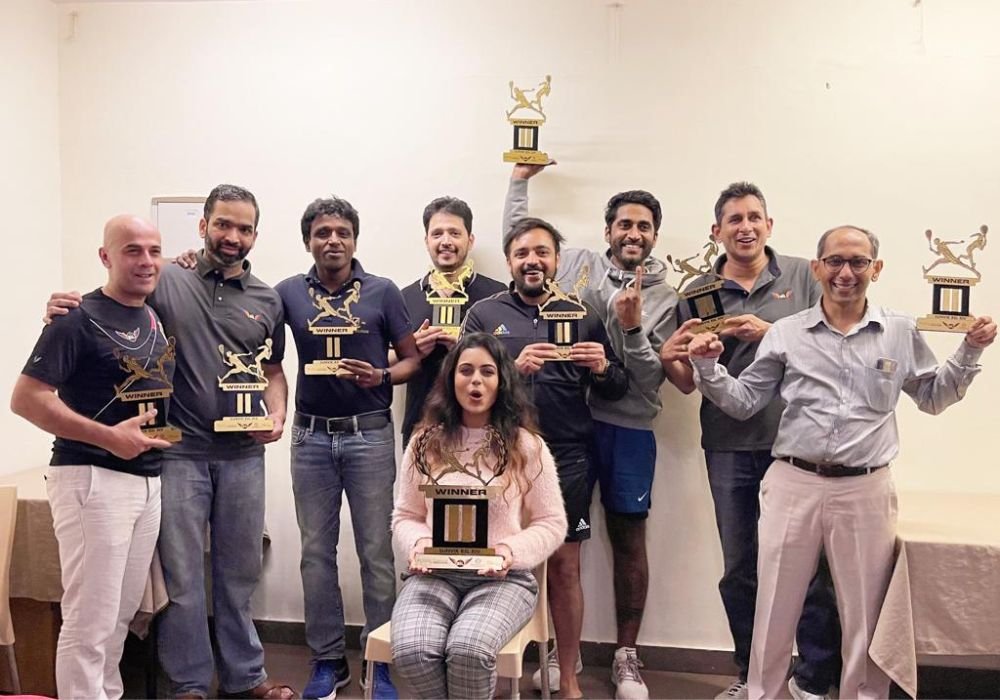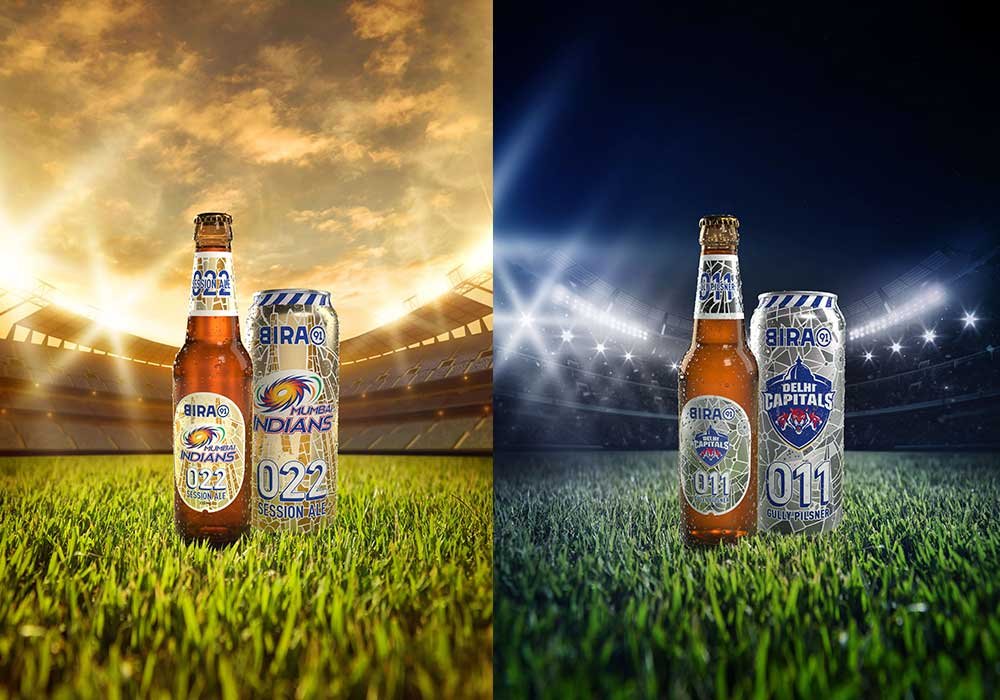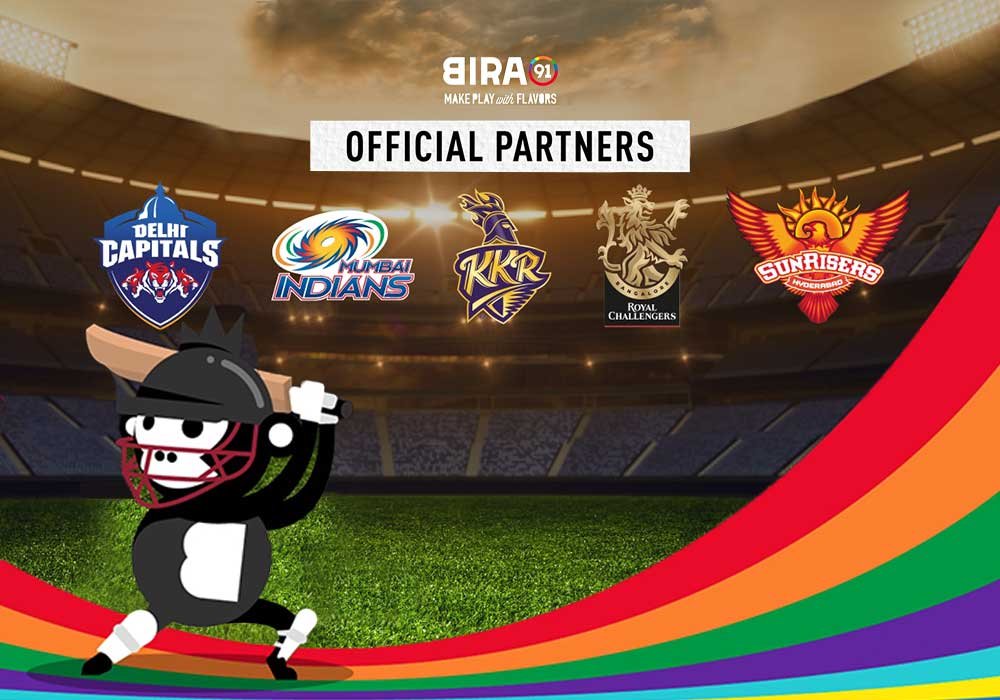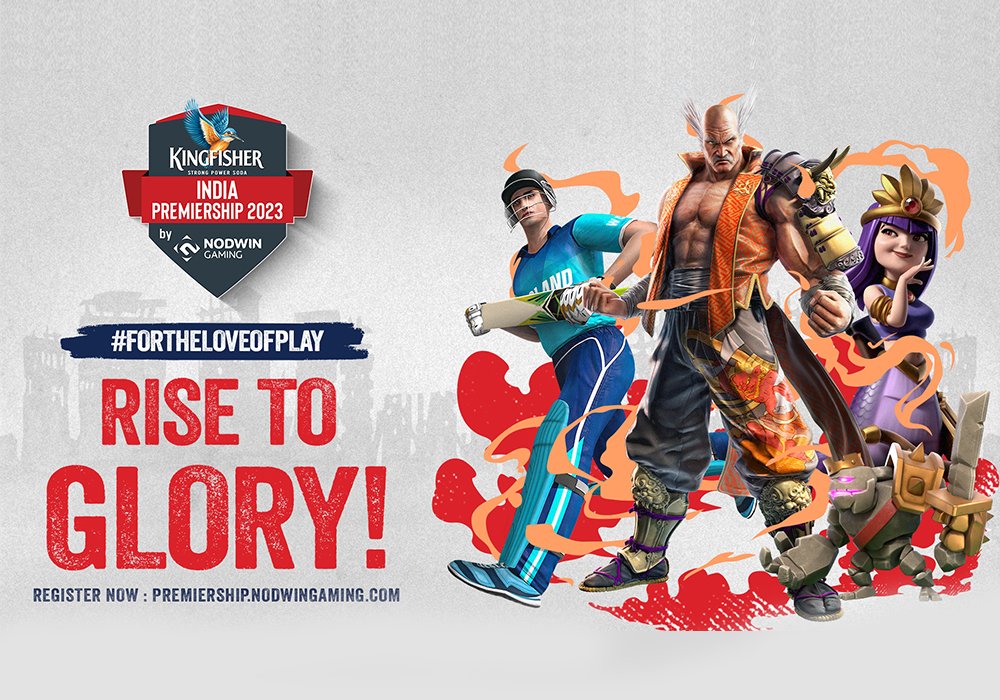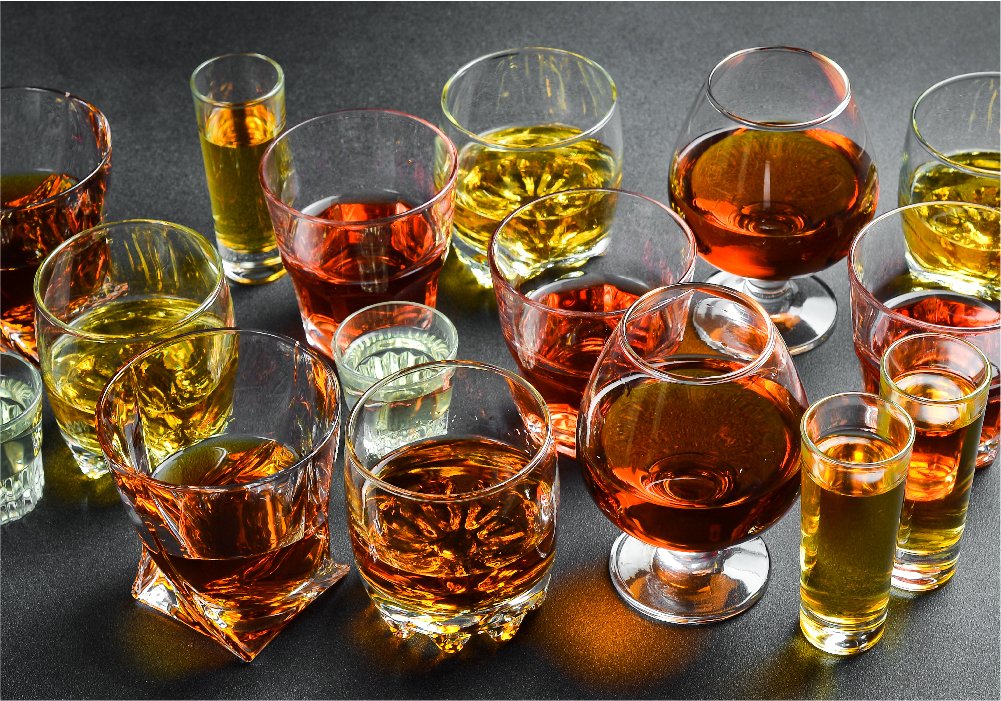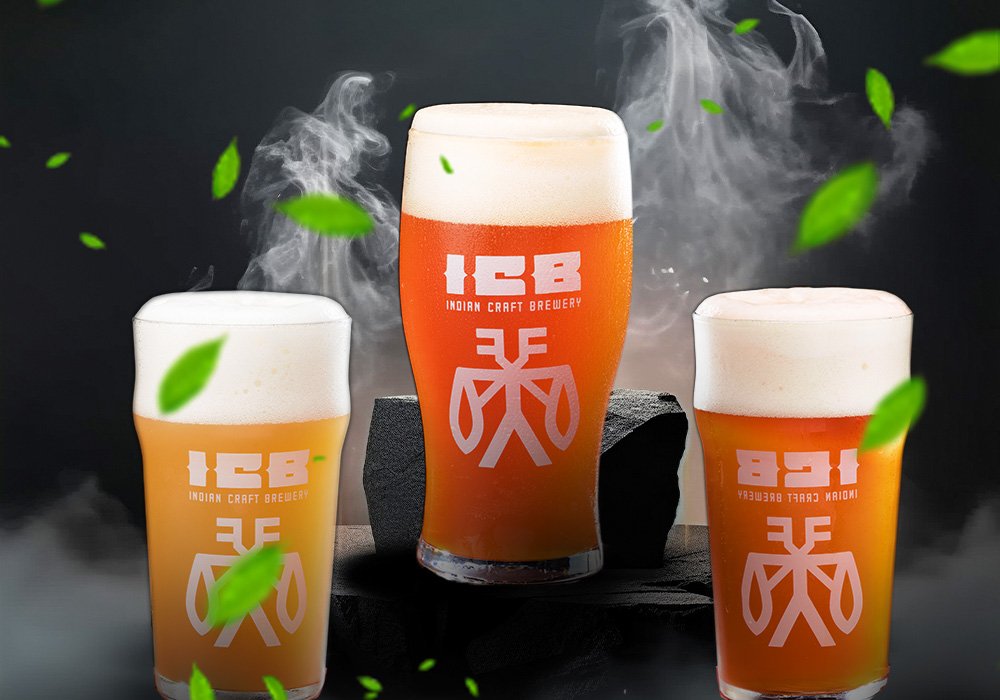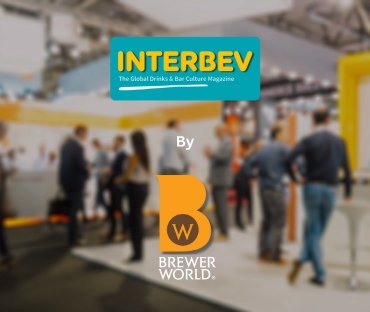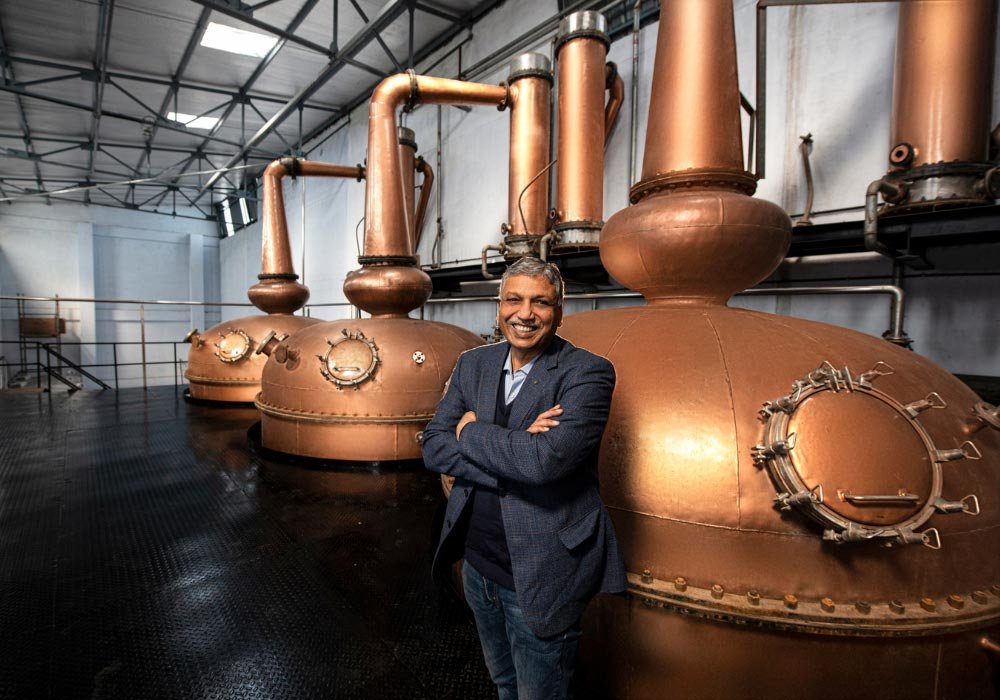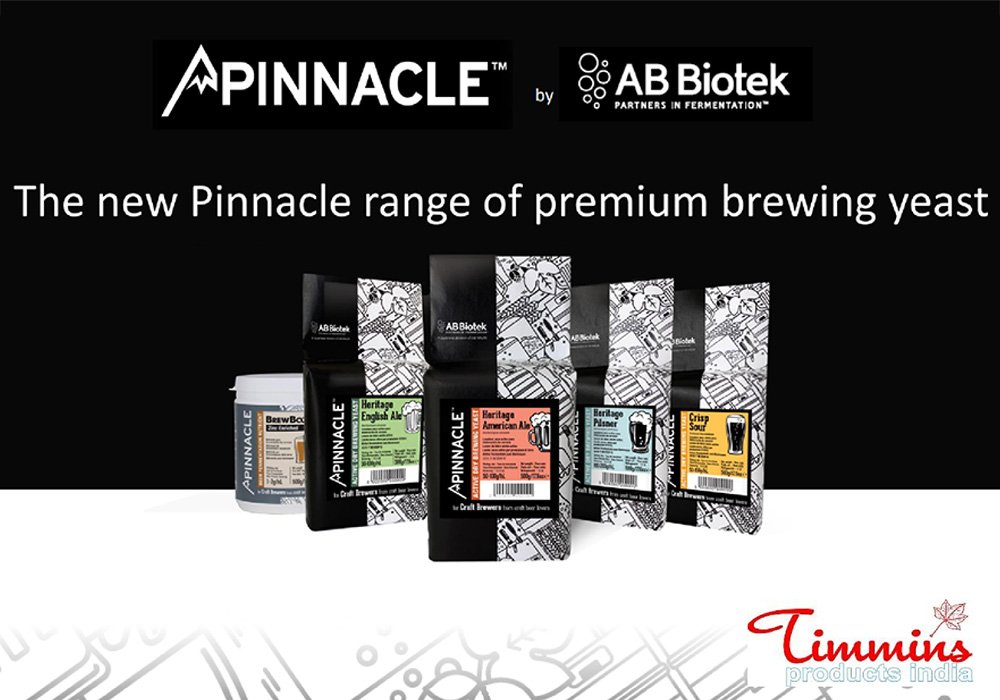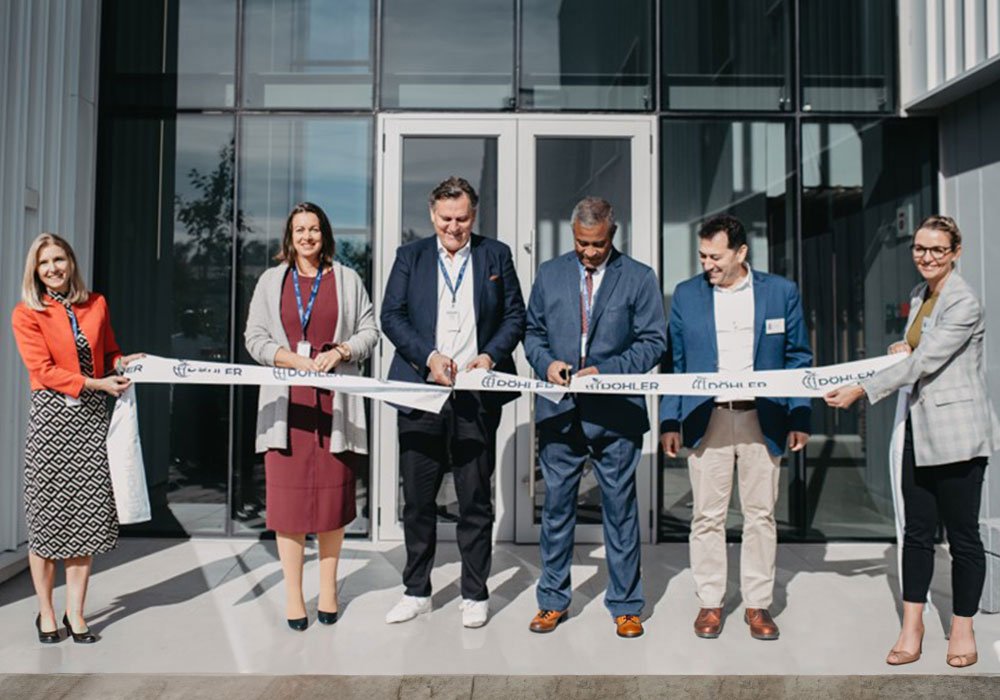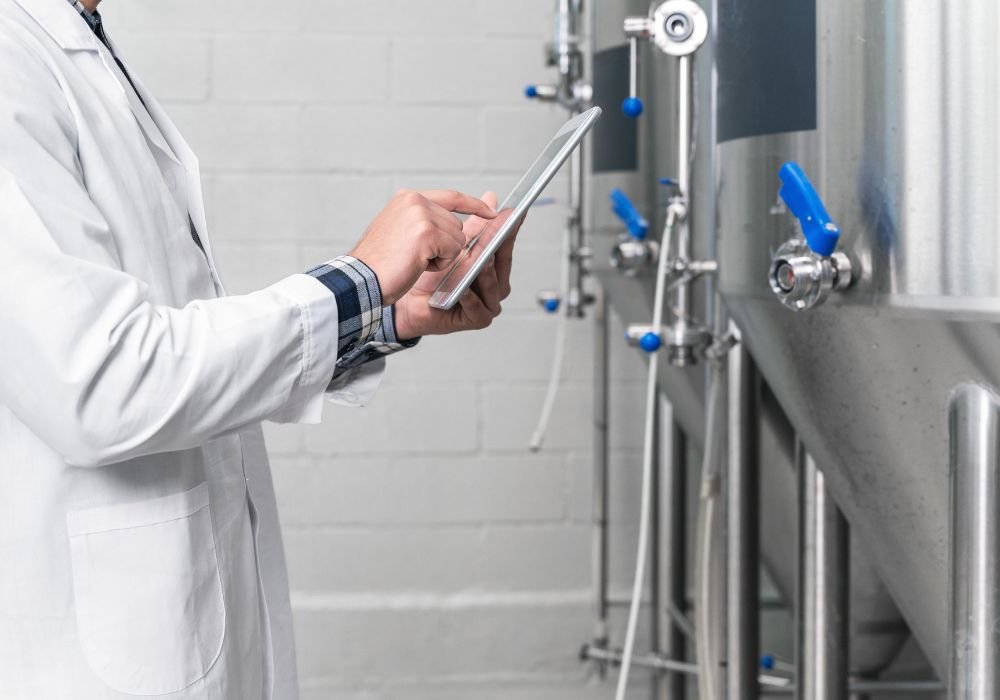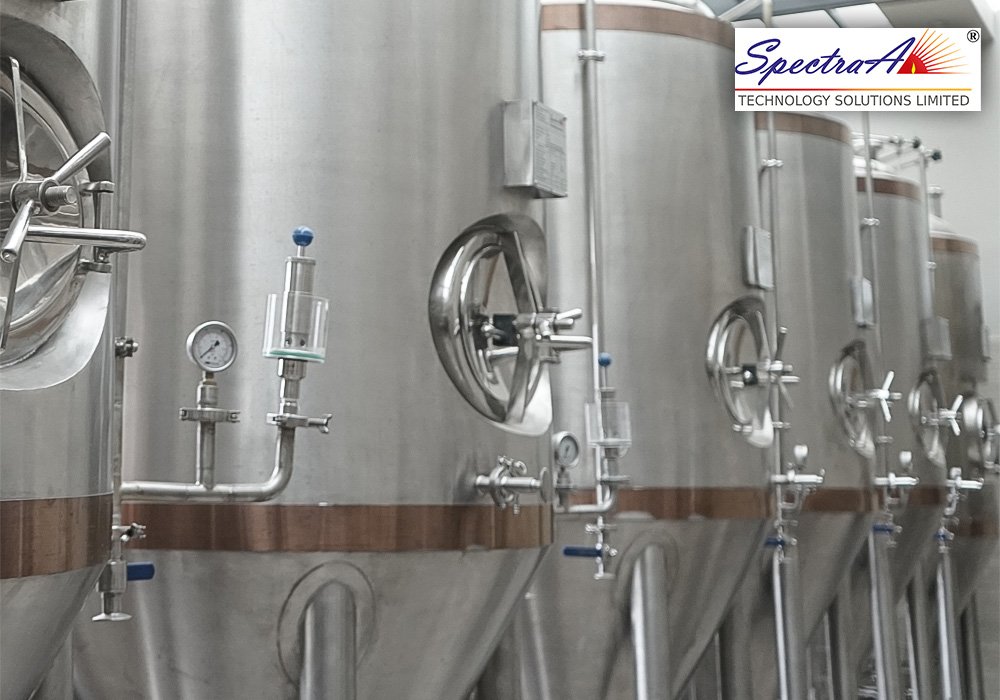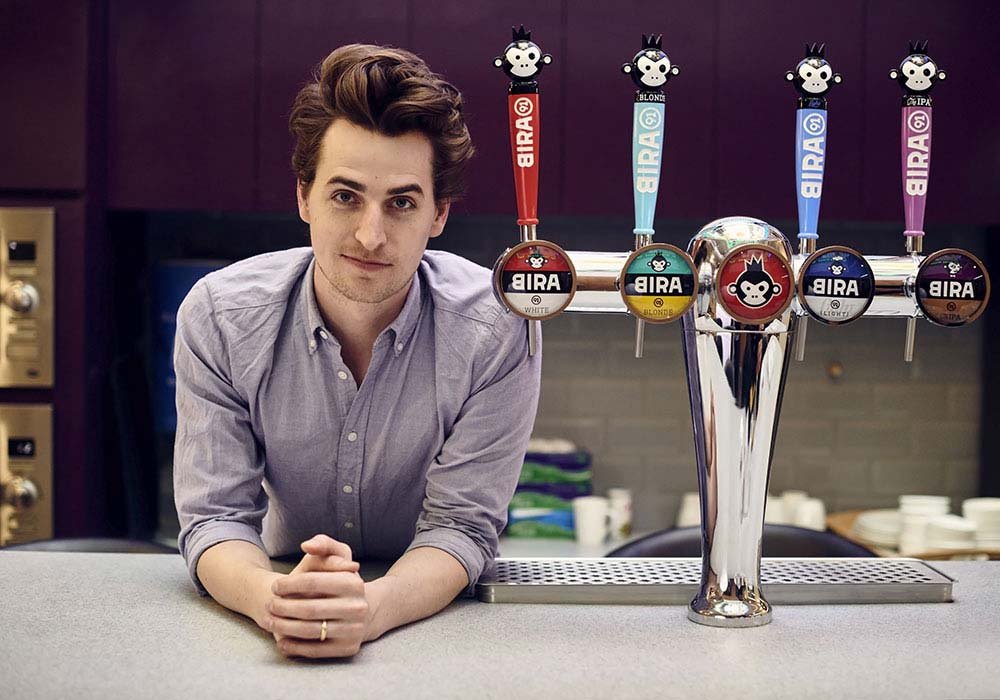
Please tell us where your passion and knowledge for brewing handcrafted beers came from?
From the time I was a little kid I always enjoyed cooking, making soaps or shampoos, really anything people could use and enjoy. When I graduated from highschool my mom got me a homebrewing kit because she figured I’d enjoy it, and she was right. I just sort of got bit by the bug. I enjoyed the process of putting different raw materials together and using your creativity to turn them into something new, but most of all I liked making something for people to enjoy. I got more and more sucked into it, and finally I decided I should try to make a career of it, so I went to brewing school. I didn’t have a science background, so I had to teach myself a lot of the chemisty and microbiology, I didn’t even study engineering and that still causes me some problems today; I just spent a lot of time hitting the books. I read everything I could. I still read about brewing every day.
As VP of Innovation Brewing at Bira91, please shed some light on the importance of capability development and training amongst brewers and production teams in a brewery set up.
The brewers’ capability is important above all else in brewing. Some of the best beers I’ve ever tasted were made in very rudimentary breweries. I’ve also tasted some poor quality beers made on very fancy systems. I liken it to cooking. Give a great chef some good ingredients and they’ll make you something amazing even if its made with basic tools. It’s the mixture of art and science. A great brewer needs to have the theoretical knowledge gained through academic study, but also know the practical application through experience, and needs to spend a lot of time in the brewery to hone the technique.
We’re curious: what are the different stages involved in product development at Bira91?
That kind of depends on the expectation for the new beer.
Launching the Boom line this year was a much different process than launching the Limited Release [IPA and Malabar Stout] beers. We believe that regardless of what pricepoint you are at, everybody deserves really well made and high quality beer, and we wanted to bring that to the consumers who want to buy in the more accessible price range. The problem there is that field is really competitive, and though some of the smaller brewers in India might disagree, we’re still pretty small, and delivering quality that’s a cut above other mass market beers but at the same pricepoint is a real challenge. For Boom we wanted to keep the beer super clean, nothing too crazy, what I jokingly call “beer flavoured beer.” That was reflected in the recipe development process. We stripped away anything that wasn’t necessary, because frankly we didn’t have room in the margin. I love it, because it really let’s the skill of our brewers shine, there is nothing for them to hide behind. That beer is great compared to any other strong beer out there, in the same price category, or even higher, and that’s purely down to the care that our brewers pour into it.
For the Limited Release beers, the process was much different because we were a lot less constrained. For these, we took the approach of looking at more developed beer markets, like the US, and looked at what was working or what was going out of favour, but we also talk a lot about beers we love and want to brew. We thought a lot about story. What trip can we take the drinker on through our ingredients, collaborations, and local twists. There’s a great quote from Henry Ford, he said “if I had asked people what they wanted, they would have said a faster horse.” At the end of the day you can look at all the consumer studies and data you want, and of course you should do some of that, but what people really want is not a particular beer style or a flavour profile, they want authenticity. We’re always going to brew the beers we want to drink. We’re always going to put our Bira twist into everything we do. Sometimes the “innovation process” comes down to – “I tasted this the other day, let’s try to build a beer around it, I have a feeling it could work” – and we run with it.
In continuation to the previous question, please tell us what went into the development of Bira91’s Malabar stout and the Indian Pale Ale.
We are very concerned with balance at Bira 91. We always want to deliver unique and flavorful beers, but we want to make sure you can have a few of them, and never get tired of them. We also focus on our limited release beers as being Imagined in India, and work an element of India into every beer.
For the IPA, this meant going in the “session IPA” direction. We wanted a lower ABV and a moderate bitterness because we didn’t want a big palate wrecker, but wanted to keep a nice aromatic punch. A lot of American hop varieties have both citrus and tropical fruit aromas, which perfectly compliment pomelo. I actually had never tasted pomelo before coming to India, but Ankur, our CEO, loves them and is a big fan. One day I said, “hey, what is that?” He gave me some and I was blown away. I was like “yo, we should make a beer with this,” and he “do it!” So we did! The more we looked into the story of the pomelo, the more we started to see it perfectly linked up with the story of the IPA. IPA originated from the Britishers sending beer over from England for the soliders stationed here. To survive the long journey, they increased the ABV and tossed more hops in, both of which act as a preservative. The pomelo traces the opposite path. An East India Company captain took pomelos from South India and brought them to Barbados, where they were crossed with the Mandarin orange, and the grapefruit was born. So the pomelo is the grandad of grapefruits, and the IPA is the grandad of hoppy beers worldwide. This year we actually sent our IPA back to England for the cricket world cup, so we’ve now really gone full circle.
For Malabar, we knew we wanted to do a stout, and we knew we wanted to do something different than an Irish style. This was one where the collaboration really took the reins front and center. Coffee is a great compliment to the roast character in stout, so we called up our friends at Blue Tokai and asked if they wanted to brew a beer together. We actually went to their brewing facility and tasted a bunch of different South Indian coffees and made a blend that really paid homage to the character of Malabar, the origin for all coffee in India, and ended up preferring it when it was made via cold brew as opposed to more traditional hot extraction. It was super smooth, a bit citrusy, a bit spicy, with a nice cocoa character. From there we actually designed the beer around the coffee, not the other way around. We knew we had to make a very smooth bodied stout, and not too aggressive, to let the cold brew come through. So we designed the beer, brewed up the coffee, then blended the two together at the end of the process just before packaging. It worked out great.
Coming to the actual brewing process of these two beer styles, could you tell us a little bit about the raw materials used? What would you describe the personality of these brews as?
For the IPA, we’re using European barley, some wheat, and two special malts, one highly toasted on the kiln, the other drum roasted to make what is called a “crystal” or “caramel” malt. These malts give the beer its nice orange color and a balancing malty, nutty, and slight caramel character. We then use a lot of Citra and Mosaic hops, both of which give the beer a tropical fruit aroma. Of course the pomelo adds in a nice citrus punch, with a touch of peely oiliness which contributes to a clean and slightly bitter finish. It really makes you want to take another sip.
For the stout, we’re using a few special roasted malts to give a complexity we found in the coffee. Roasted barley malt gives a touch of more astringent and assertive roastiness, while roasted wheat gives a very mellow and smooth roast character, and we use a very special roasted rye, rye bringing a wonderful spicy character and a lot of body to beer. I won’t reveal the coffee blend, you’ll have to ask Matt over at Blue Tokai for that.
For both beers we’re using our house top fermenting ale yeast, while gives a clean, slightly stone-fruity aroma and a little more body in the beer.
Which Bira91 craft brew do you personally love the best and why?
That’s a tough one. Really depends on the situation. I think there is a time and a place for all beer styles. If I am having a nice curry or something spicy I’m probably having Strong. If I’m hanging out with friends outside or someplace with nice weather I’m definitely taking Blonde. If it’s morning I’m having Malabar Stout. But honestly I probably drink Light the most. I like to exercise and it is very refreshing after a jog. Plus, if you’re drinking beer all the time, it had better be low in calorie.
As an experienced brew master yourself, how do you decide on new beer styles to brew?
It’s funny, I have landed in a lot of innovation roles in my career, but I really enjoy the challenge of brewing classic beer styles, so if I am brewing something just for me on a small system I’ll be doing a classic German pilsner or English bitter.
Otherwise, I always want to think about the person who is going to drink the beer. What do they want, and why do they want it? How can I give them something unique, but not gimmicky, exciting, but balanced? That is how I decide.
What do you feel about the growth of craft beer in India?
I think we’re sitting on a rocket ship. I think in 10 years the craft beer scene here will look like the US after 30. With more access to information, people traveling more, social media, stuff just moves so fast now.
India is such an intense place. From the clothing, to the food, to the music, everything is so colourful, and it’s time beer catches up.
I’m really looking forward to governments loosening up some restrictions around brewpubs and tap rooms, I think that’s necessary to give smaller players the ability to actually make a sustainable business at smaller scale.
I’m looking forward to more people entering, coming up with new twists, and especially for consumers to start playing more with the beers they’re trying. I think all the brewers out there are looking forward to when the average beer consumer starts to experiment more. We’ll get there soon.
What are your observations on the Indian consumer palette? How is it different from what you have observed abroad?
Right now I think the palate for beer is a little sweeter and less bitter than elsewhere. In Europe, most beers, both craft and mass, have a bit more bitterness to them. In the US, mass beers tend to be light and a bit sweet, while craft beers, especially IPAs, can be kind of overboard. I think it’s just a matter of more people getting exposed to different flavour profiles and the range of what beer can be. People’s palettes tend to change as they try new stuff. It’s our job as brewers to keep challenging the consumer, but also to make sure they’re getting balance.
What is Innovation Brewing at Bira91? Does this involve setting sustainable beer brewing goals as well, given that climate change is a hot topic of discussion in today’s day and age?
I think the word “innovation” gets thrown around a lot today. A brewing company coming out with a new pale ale is not innovation. The first guy who threw beer into a bourbon barrel (shoutout Greg Hall), that was innovation. Creating a new beverage category that hasn’t been seen in the market is innovation. That is one part of what we are trying to do in the Innovation department.
Another part of innovation is looking at your processes and inputs and figuring out how you can make your same beers better, or keep them tasting the same while making the process more sustainable. How can we better design out cartons to make them stronger, and save paper? How can we eliminate plastic, but ensure our products don’t get damaged in transit? How can we make better use of our effluent treated water to reduce our impact on the planet?
You can also innovate how you interact with other companies in the space. Can we work with our maltster to ensure they’re delivering better malt by helping them source wheat from local farmers, creating a sustainable win/win/win? What does competition really mean, and can we collaborate with other brewers to share capacities or supply chain routes, resulting in more efficient use of resources and fresher beer for our consumers? All of that are things we are looking at.
Brewing is an interconnected process, not just the production of the beer itself, but the whole business, and we are pushing on all fronts to make betters beers for more people with less impact.
Zero alcohol is another hot trend right now, and there are many commercial bottled brands that have released 0.0 alcohol brews. How do you feel about this, personally, if we may ask?
I think its great. For a long time non-alcoholic beer was pretty gross, but with recent advances we can make it taste good. I think it is a great alternative to stuff like sugary soft drinks. Beer is wholesome and healthy, and we would all be better off if we switch from soda to non-alcoholic beer. I don’t see it hitting beer as much as hitting soft drinks.
Do you see the craft beer segment fitting in well with this (zero alcohol beer) trend?
Of course. As long as people want unique and flavourful beers there will be people who want that in non-alcoholic as well. The challenge right now is that there is a push to make non-alcoholic legally 0.0%, as opposed to 0.5%. The issue there is that the equipment to produce beer to 0.0% is very expensive, probably prohibitively so for smaller local brewers, where there are ways to achieve 0.5% with little to no capex. So if we want to see more craft in non-alc then we should all start petitioning.
Are there any new brews we may expect from Bira91 in 2020?
Yes, of course! You can expect some very exciting things in 2020, but it’s not 2020 yet so you’ll have to wait and see.
What do you feel about the future of Bira91 in the international market?
As a foreigner, I can say that the idea of India, at least in the western world, brings up so many different images. It’s a combination of bustling cities, a rich food and artisan culture, fast moving IT, poverty, opulence, a lot of things, but always a bit crazy. Which is perfect, because we at Bira are a bit crazy. I think that we are on the path to be the beer company that everybody thinks about when they think of India. This new generation wants flavour and authenticity, and that is us. For this new generation it’s not going to be little birds or snakes, its going to be the monkey.
For many, beer (by itself, or a particular style) brings back many fond memories that are very personal. Is that true for you? Please tell us about your love for beer and why it runs so deep in your veins.
That is absolutely true. Where you are, who you are with, these things have a huge impact on how you perceive your beer. I still think the best beer I ever tasted was one I had with my dad and brother when he came back from his deployment in Afghanistan. It was cheap beer, but that wasn’t the point. I think that’s what I love about beer. More than any other beverage on the planet, it brings people together. Whether it’s with your brother, or a stranger you meet in a hostel in a foreign country, you have a beer together, and at least for that moment you’re speaking the same language. Everything is alright.
And last, but certainly not the least: if you had to give today’s newbie brew masters some advice, what would it be?
Read. Study. Practice. Show up. Be valuable.
